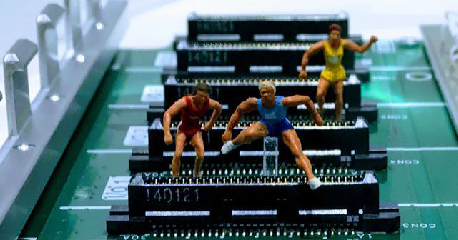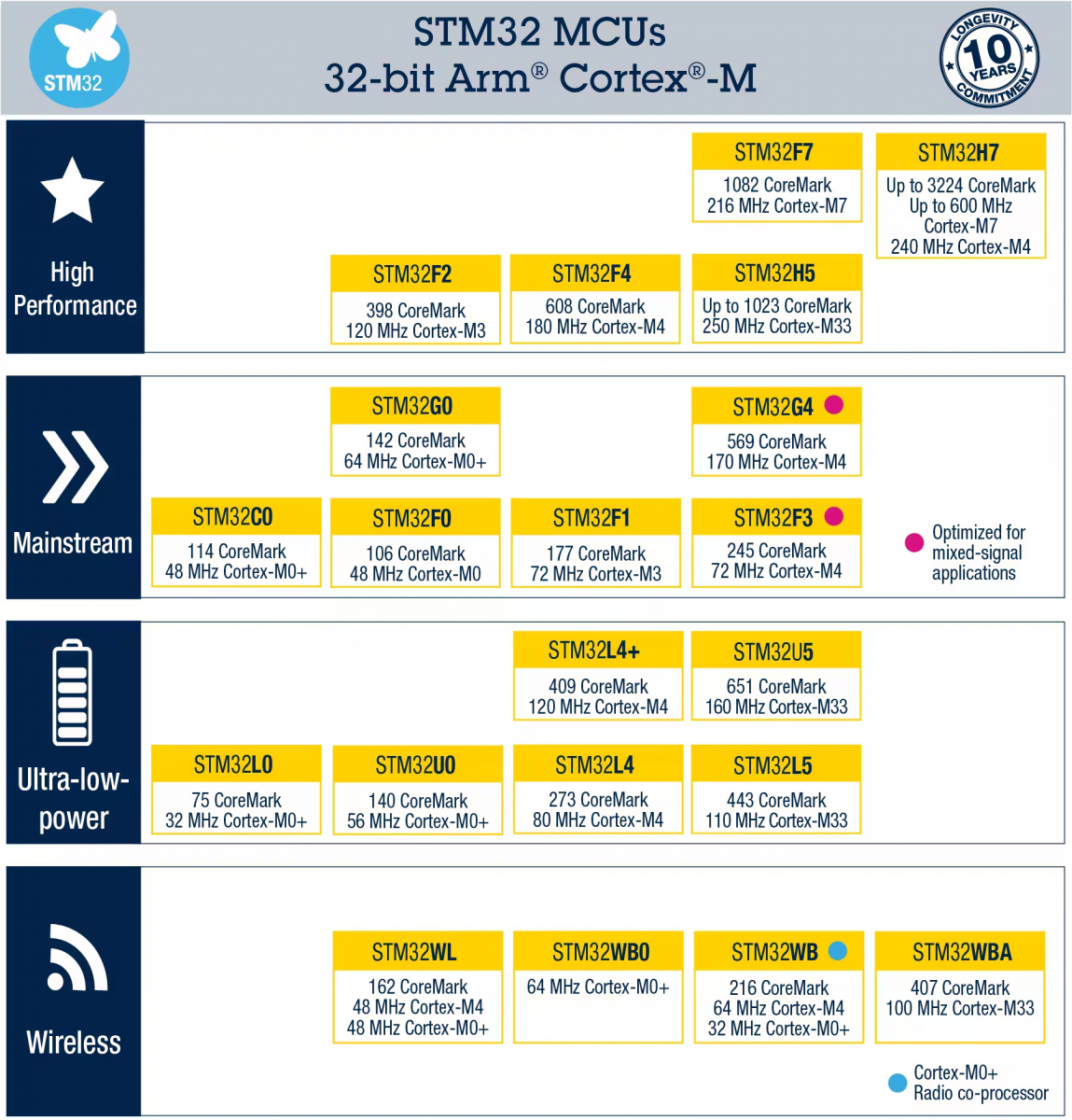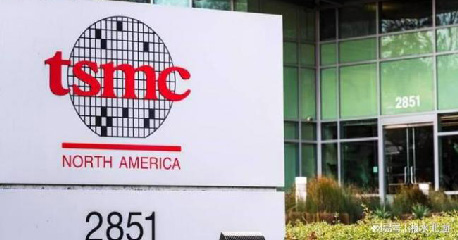
Since the beginning of this year, with the Russian-Ukrainian conflict, inflation has intensified, the dollar index has risen steadily, and the chip market has become colder.
At present, it is the period for the disclosure of the third quarterly reports of chip manufacturers. According to a report by Taiwanese media Economic Daily on October 31, 10 semiconductor manufacturers including TSMC, Intel, SK Hynix, Micron, UMC, NSMC, Nanya, ASE, Macronix, and Licheng have announced the following announcements. In terms of capital expenditure, the cumulative downward revision amounted to NT$600 billion (approximately US$18.6 billion), which is the largest capital expenditure revision in the history of semiconductors.
The business scope of these ten semiconductor manufacturers mainly covers the fields of wafer foundry, memory chips, packaging and testing, and some of them have revised down capital expenditure twice. It can be seen that the current semiconductor market is ushering in the painful period of the market cycle.
IDM
Intel
Down $2 billion
On October 28, Intel announced its financial results for the third quarter of 2022. The report shows that Intel's third-quarter revenue was $15.338 billion, down 20% from the same period last year. Excluding revenue, its net profit also fell 85% year-over-year to $1.019 billion.
Behind the decline in Intel's revenue is directly related to the sharp decline in demand for PC processors. Intel said that PC demand was weak in the third quarter, mainly due to weak consumer and education markets, while PC makers were still reducing inventories.
Data released by Canalys also showed that the global PC market suffered a sharp drop in demand in the third quarter of 2022, with total shipments of desktops and laptops down 18% to 69.4 million units.
In order to deal with the impact of the business cycle, Intel has given two methods of "open source" and "throttling". Among them, in terms of cost savings, it is to reduce costs and improve business efficiency. This fiscal year, capital expenditures fell from 27 billion yuan to 25 billion US dollars, a decrease of 2 billion US dollars. In addition, Intel also plans to achieve $3 billion in cost reductions in 2023 and a cumulative $10 billion in capital expenditure reductions by 2025.
Of course, not only Intel, but in the context of the continuous decline in PC demand, chip manufacturers are living a tight life and urgently need to clear their inventory.
foundry
TSMC
Second cut of $4 billion
Wafer foundry leader TSMC is the world's largest and most advanced semiconductor manufacturer, and its performance and trends are one of the important weather vanes in the semiconductor industry.
A few days ago, TSMC announced its financial report for the third quarter of 2022. Revenue increased by 47.9% year-on-year and 14.8% month-on-month; net profit reached a new high of US$8.8 billion, a year-on-year increase of 79.7% and a month-on-month increase of 18.5%. These data are beyond the analysis. teacher's expectations. Against the background of the current global semiconductor market decline, it highlights the excellent profitability of TSMC as a leading company in the semiconductor industry.
Even so, affected by industry uncertainty, TSMC still announced a 10% cut in this year's capital expenditure plan to $36 billion, a decrease of $4 billion. Just three months ago, TSMC had lowered its capital expenditure target for this year to nearly $40 billion from $44 billion proposed at the beginning of the year. That is to say, after the second reduction, the amount of capital expenditure planned at the beginning of the year has been revised down by more than 18%.
As for the reason for the downward revision of capital expenditures, Huang Renzhao, vice president and chief financial officer of TSMC, explained that the main reason is that the recent adjustment of semiconductor inventories has exceeded expectations, coupled with inflation, Russia-Ukraine conflict, interest rate hikes and other variables continue to make customers will The expansion plan was delayed, etc.
In addition, according to the latest report from Taiwanese media Electronic Times, supply chain sources revealed that since the third quarter, TSMC's top ten customers have successively cut orders, among which MediaTek, AMD, Nvidia, Marvell and STMicroelectronics have reduced orders more than expected, and Delayed delivery date.
As the "first brother of foundry" that occupies half of the global foundry industry, TSMC is making concessions in the face of inflationary pressures, rising costs and a series of other global economic difficulties. Second-tier foundries such as UMC and PSMC are making concessions. , the day is even worse.
UMC
Down $600 million
UMC and TSMC were once known as the "foundry duo" in Taiwan, China, and announced the operating report for the third quarter of 2022 on October 26. The combined revenue was NT$75.39 billion, up from 72.06 billion in the previous quarter. Yuan grew by 4.6%, an increase of 34.9% from 55.91 billion yuan in the third quarter of 2021. In the third quarter, the gross profit margin reached 47.3%, the net profit attributable to the parent company was NT$27 billion, and the profit per common share was NT$2.19.
While revenue results remained solid, UMC lowered capital expenditures to $3 billion from the original target of $3.6 billion, while stressing that its capacity expansions in Tainan and Singapore remain on track to meet long-term supply commitments.
Wang Shi, general manager of UMC, said that there are two main reasons for the downward revision of capital expenditures, namely, the delay in the delivery of equipment and the response to the declining economy. At present, most of the major customers who have signed long-term contracts with UMC are not in breach of contract, but they also admit that "there are indeed customers who are unable to fulfill long-term contracts."
Power Semiconductor
Down $650 million
RSMC held a legal meeting on October 13. The company's third-quarter revenue was NT$19.184 billion, down 12.13% from the previous month and up 10.95% year-on-year; .
It is also because of the decline in capacity utilization. Xie Zaiju, general manager of PSMC, said recently that due to the shortage of clean room and mechanical and electrical engineering manpower, the prolonged equipment delivery, and the reduction of production capacity planning due to market conditions, PSMC originally planned to this year. The capital expenditure was US$1.5 billion, which has been revised down to US$850 million (including 95% for 12-inch and 5% for 8-inch), a decrease of as much as 43%, a decrease of about US$650 million.
memory chip
SK Hynix
Down $7.04 billion
Among these manufacturers, SK hynix has the largest reduction!
On October 25, South Korea's SK Hynix, the world's second largest memory chip manufacturer, announced that its revenue for the third quarter of 2022 was 10.98 trillion won, and its operating profit was 1.66 trillion won (OP profit margin was 15%). Net profit was KRW 1.1 trillion (net profit margin 10%). Sales and operating profit decreased by 20.5% and 60.5% respectively month-on-month.
SK hynix analyzed that due to the deterioration of the global macroeconomic environment, sluggish demand for DRAM and NAND products, sales and prices have declined, so revenue fell month-on-month. The semiconductor memory industry is facing an unprecedented deterioration in market conditions as shipments from PC and smartphone makers, which are major buyers of memory chips, decline.
At the same time, SK Hynix predicts that supply will continue to exceed demand for now. Taking into account these factors, the company decided that its investment this year is expected to be 10-20 trillion won (about 50.7-101.4 billion yuan), and it plans to cut investment expenditure by more than 50% next year, and it is estimated that the overall reduction will be as high as 10 trillion won ( approximately $7.04 billion).
Micron
Down $3.5 billion
As demand for consumer electronics such as personal computers and smartphones declines, U.S. memory chip maker Micron has also been hit hard.
According to Micron’s fourth-quarter financial report for fiscal 2022, revenue in the quarter fell by about 20% year-on-year to US$6.64 billion, the first decline in more than two years, which was lower than the lower limit of Micron’s previously announced financial forecast, and also lower The market expected $6.693 billion. Net profit was US$1.49 billion, down 45% year-on-year, lower than market expectations of US$1.376 billion.
At the same time, Micron issued a warning, saying that all customers are cutting orders, and future memory chip demand and company operations will face more serious difficulties, and announced that the company's capital expenditure in fiscal 2023 will be cut by 30%, and the expected annual capital expenditure will be about 80%. billion, a decrease of about $3.5 billion. Among them, the investment in chip packaging equipment was cut in half.
South Asia Branch
Down $200 million
DRAM manufacturer Nanya Technology Co., Ltd. recently held a corporate briefing. Affected by the decline in DRAM prices and shipments, revenue in the third quarter was NT$11.022 billion, down 38.9% from the second quarter; operating gross profit was NT$3.597 billion Yuan, the gross profit margin was 32.6%, a decrease of 11.5 percentage points from the second quarter; the operating profit was NT$920 million, and the operating profit margin was 8.3%, a decrease of 21.5 percentage points from the second quarter.
Nanya Branch said that due to factors such as high inflation and the epidemic, the overall market conditions were poor. Nanya Branch’s capital expenditure in 2022 is expected to drop from NT$28.4 billion to NT$22 billion, a decrease of NT$6.4 billion (about 200 million Taiwan dollars). USD), a drop of about 22.5%. Among them, capital expenditure on production equipment fell by about 40%. In 2023, capital expenditure will continue to be reduced, with a target of no more than NT$22 billion, of which capital expenditure on production equipment will be further reduced by more than 20% compared to 2022.
Macronix
Down $170 million
Macronix announced that its consolidated revenue for the third quarter increased by 1% to NT$11.472 billion, a decrease of 23% from the same period last year. Gross operating margin was 44.2%, a decrease of 7% from the previous quarter and a decrease of 21% from the same period last year. Operating net profit and operating profit margin for the quarter were NT$2.417 billion and 21.1%, respectively. Operating profit fell 19% from the previous quarter and 31% from the same period last year.
Chairman Wu Minqiu said that due to the slowdown in global economic growth and the weakening of storage demand, Macronix will reduce production by 20-25% from the fourth quarter to avoid the risk of possible future inventory price declines.
In addition to reducing production, Macronix's capital expenditure this year has also been revised down from the original NT$16 billion to NT$10.6 billion, a decrease of 33.8%, or a reduction of NT$5.4 billion (approximately US$170 million).
Packaging and testing
sun and moon
Down $200 million
Recently, ASE, a major semiconductor packaging and testing company, held a legal meeting. Benefiting from the high packaging and testing price and utilization rate, and the better-than-expected demand for entrusted manufacturing services (EMS), ASE’s unaudited net profit in the third quarter of 2022 Operating income was NT$188.626 billion, a year-on-year increase of 25% and a quarterly increase of 18%; the net operating income of assembly and testing services was NT$988.31, a year-on-year increase of 10% and a quarterly increase of 4%; the net operating income of electronic manufacturing services was NT$90.665 billion Taiwan dollar, a quarterly increase of 37%.
However, due to the adjustment of semiconductor inventories, ASE's capital expenditure this year will be revised down by 10%, from the original 2 billion US dollars to about 1.8 billion US dollars, down by nearly 200 million US dollars.
Into force
Down $217 million
Semiconductor packaging and testing manufacturer Licheng held a legal meeting on October 28 and announced its third-quarter financial report. The third-quarter revenue was NT$21.43 billion, a quarterly decrease of 7.9% and an annual decrease of 4%; gross profit margin was 19.4%, a quarterly decrease 4.1%, down 4.4% year-on-year.
Licheng said that the third quarter was affected by the adjustment of product inventory of logic and memory customers, the adjustment of product mix, and the decline in capacity utilization, which affected the performance of gross profit margin.
This year's capital expenditure is expected to be NT$17 billion, and next year will be reduced by 40% to about NT$10 billion, a decrease of about NT$7 billion (about US$217 million).




